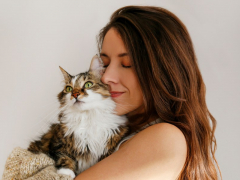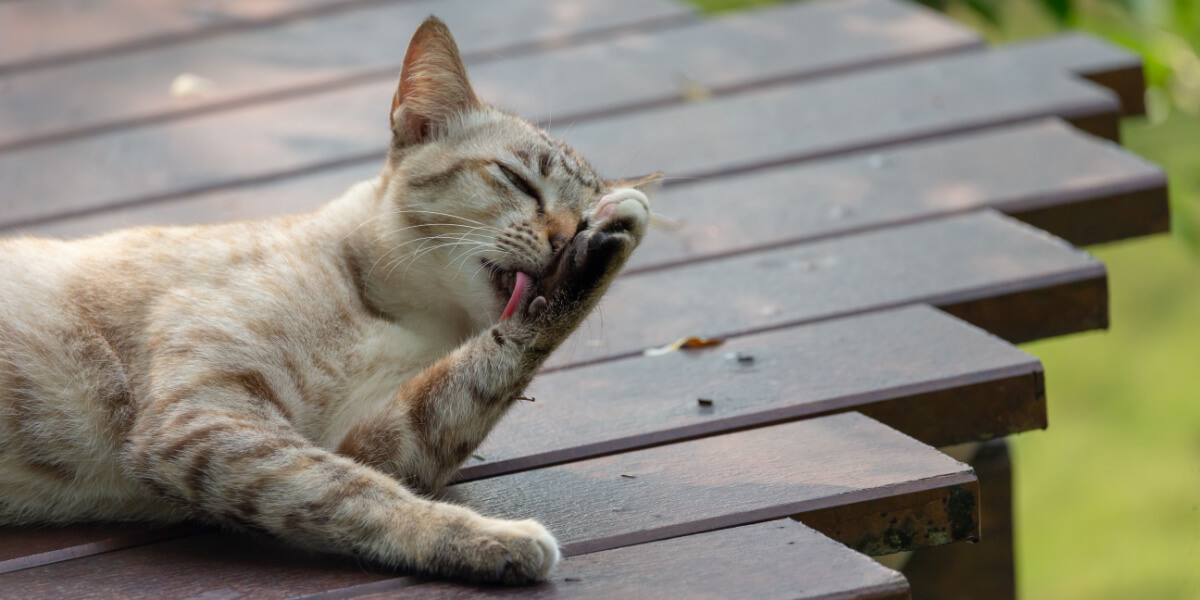
Seeing your cat lose their fur can be upsetting and worrying for any cat owner. Fur mowing, or overgrooming, is a very common problem that leads to hair loss around the back, belly, and hind legs.
Fur mowing refers to overgrooming behavior in cats. Overgrooming is usually caused by stress or medical issues such as pain, infection, or allergies. Patience and a range of methods to reduce your cat’s stress will reduce their overgrooming behavior.Key Takeaways
Usually overgrooming is caused by either an underlying health problem or environmental stress, so the first step is to identify the cause which your vet or a behaviorist can help with. Stopping fur mowing can take time, as well as trial and error with a combination of methods.
Also Read: Repetitive, Excessive And Compulsive Grooming In Cats
How To Stop Fur-Mowing
The key to effectively managing overgrooming to is identify and address the underlying cause of the problem. Different causes will have different solutions, so it’s important to find the best solution that suits your cat.
1. Make a Trip to the Vet
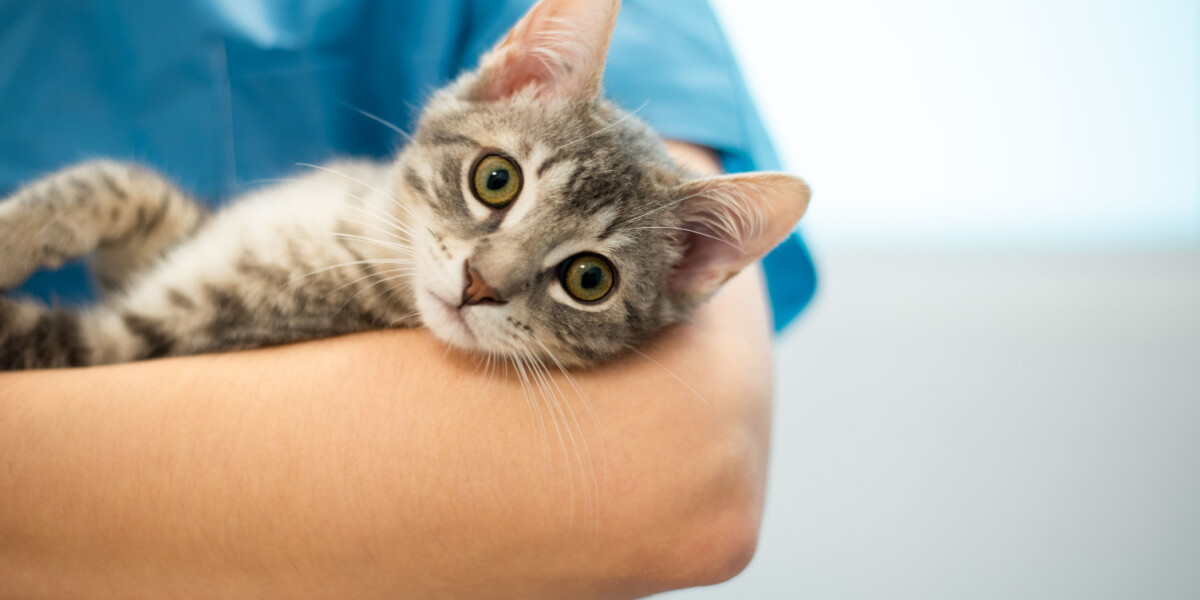
Fur-mowing can be due to medical causes, so a check up with a veterinarian is an important step.
Ruling out any underlying medical problems is the first step in getting to the root cause of your cat’s overgrooming.
Common health problems that can cause overgrooming are –
- Food allergies
- Environmental allergies
- Fleas or flea allergies
- Pain
- Infections – usually skin, urinary, or anal sac infections
- Psychogenic alopecia
Some simple health checks will identify these issues; the vet will want to examine your cat and ask you some questions about their diet, environment, and parasite control. Fleas, mites, and lice that make your cat feel itchy can easily be treated, and your vet will help you choose the right product to use as an ongoing preventative against parasites.
Infections can be treated with antibiotics which usually resolve the overgrooming once the infection has cleared. Allergies can be trickier to diagnose and may involve further investigations such as blood testing and diet trials. But once the cause of the allergy has been found, itching and overgrooming can be controlled with medications such as antihistamines, prescription diets, and in some cases steroids.
If no medical causes are found, and all other causes of overgrooming such as stress have been ruled out, sometimes vets recommend medication to treat your cat’s behavior. A compulsive disorder called psychogenic alopecia can cause excessive overgrooming in cats and can often only be controlled with medication. In some cases, anti-anxiety medication can also be prescribed to help with stress.
Also Read: 10 Subtle Signs Your Cat May Be Sick
2. Reduce Stress
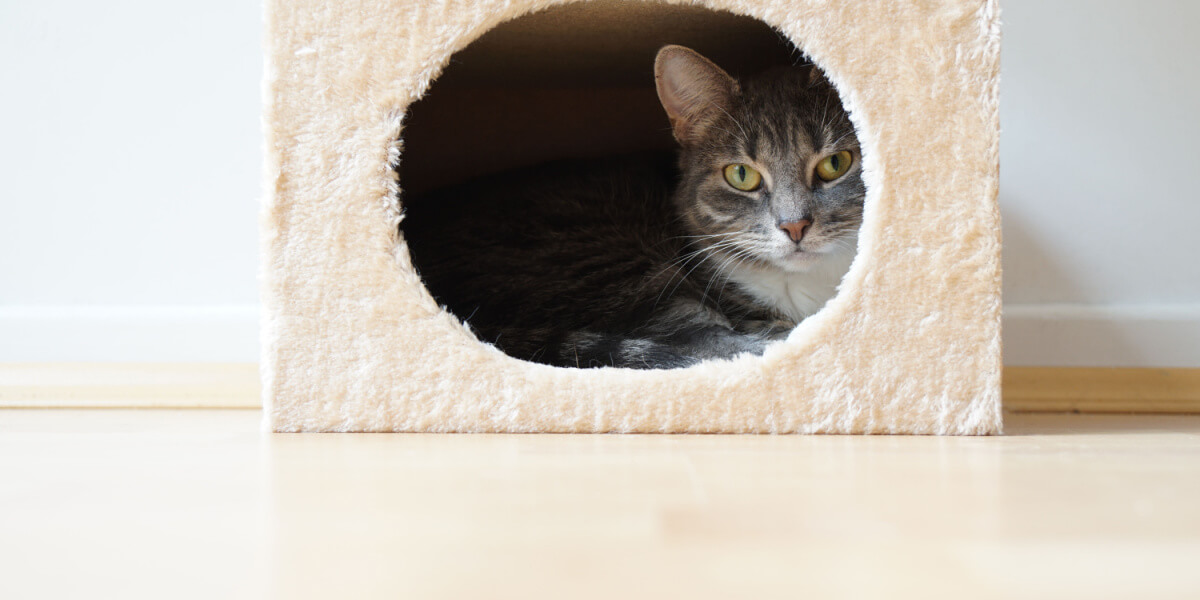
Stressed cats may benefit from multiple safe hiding places in the home.
Stress is one of the leading causes of overgrooming in cats. Our feline family members are creatures of habit and routine, and they’re very sensitive to any changes to that.
One of the biggest causes of stress for cats is actually other cats. This might be an unfriendly neighboring cat that’s causing trouble in the garden, or it could be a new cat that’s arrived in the house or conflict with an existing cat in the house.
You should always make sure that your cat has a safe space to call their own: ideally, somewhere they can hide away if they want to. If you have a new pet, slow introductions are essential, and ensuring your older cat has time to themselves will help to reduce stress.
Events such as moving house, decorating, or visitors coming to stay can upset your cat and cause them to start fur mowing to relieve stress. If you do plan to make any changes, always introduce them gradually and monitor how your cat responds.
Some of the ways you can reduce stress in your home are –
- Consistent feeding times
- Keeping food and water bowls in the same place
- Allowing outdoor access freely via a cat-flap
- Providing comfortable bedding in a safe place
- Providing them with a hiding place such as enclosed bedding, or access to somewhere in the house they like to hide
- Ensure enough resources for all cats without having to share – food, water, litter boxes, beds and toys
- Keep litter boxes in the same place
- Provide plenty of toys and games
Also Read: 5 Visual Signs Of A Stressed Cat And How To Help
3. Be Patient and Never Punish
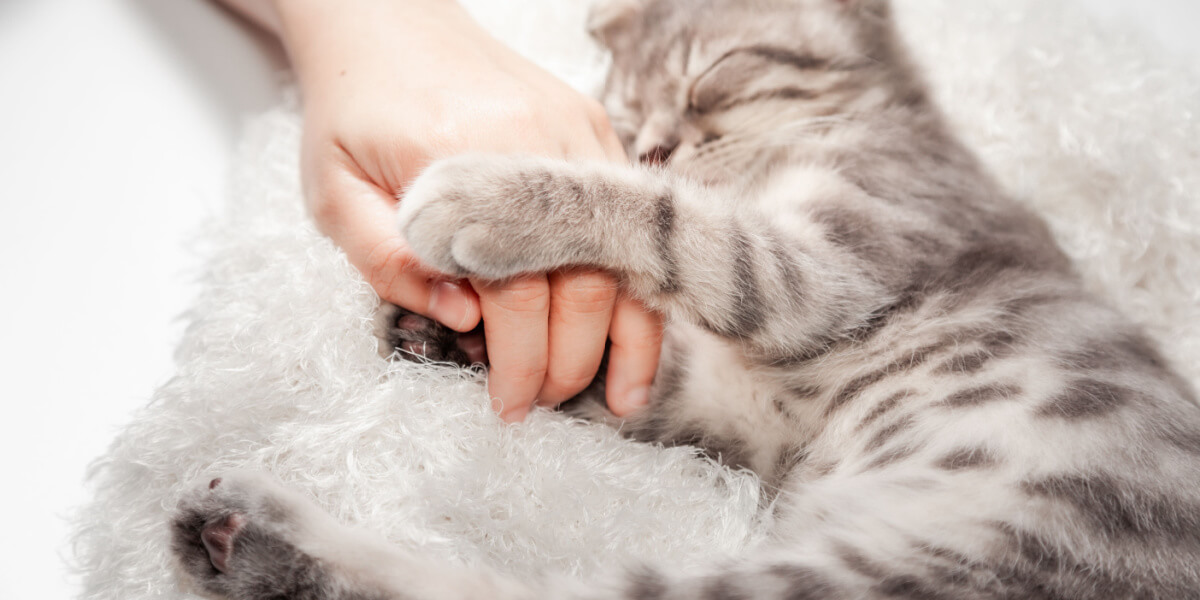
Always remain calm and patient with your cat: punishment tends to only increase stress.
Never punish your cat for negative or unwanted behaviors, as this only creates more stress and in turn exacerbates the problem. Cats are more likely to associate punishment with something negative which can lead them to become fearful of you.
If you notice your cat overgrooming, it’s best to distract them and encourage them to play instead. Play time should be relaxing and will help your cat relieve their stress without causing harm to themself. Playtime is also a great opportunity for some bonding time and strengthens the bond you have with your cat.
Ensuring your cat feels relaxed and calm when you’re around will hopefully lead them to be more relaxed when you leave them alone, as long as they have a safe and relaxing environment. Cats can be slow learners though, and require lots of positive reinforcement and patience, so it could take some weeks before you see fur mowing start to reduce.
Also Read: How To Discipline A Cat The Right Way
4. Try Calming Supplements and Products
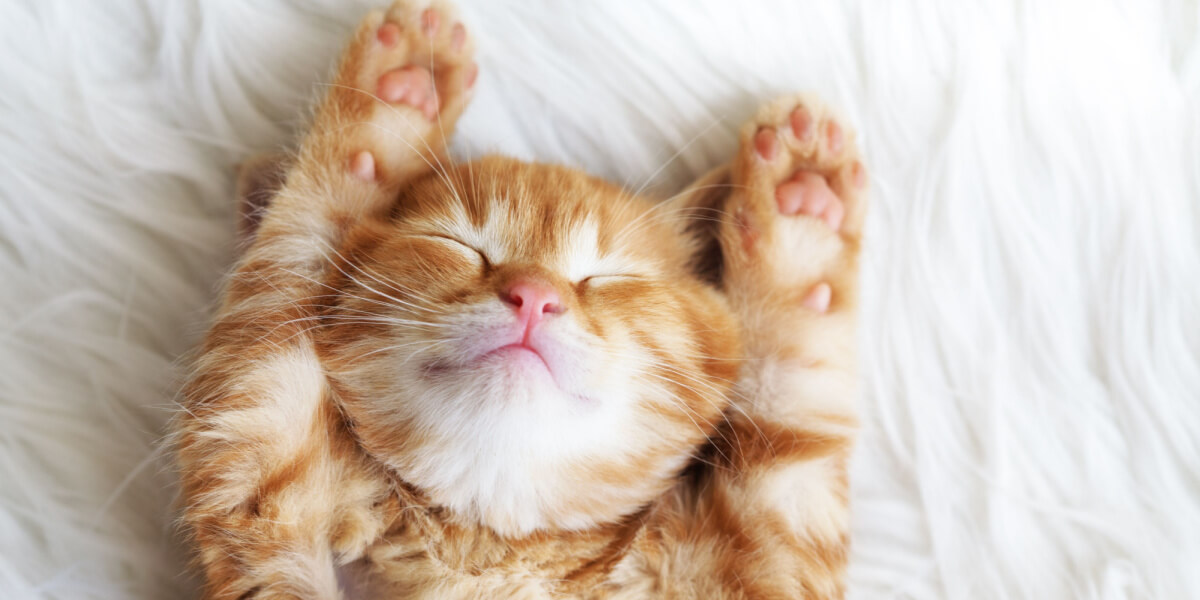
There are various supplements and products to help cats remain relaxed and calm in their environment.
When it comes to creating a calm and relaxing environment for your cat, there is a whole range of products available to help you.
You can try using plug-in diffusers or sprays that contain synthetic pheromones such as Feliway, which are designed to help calm your cat. It can be helpful to use these in the areas of your home where your cat spends most of their time.
There are also several supplements available now containing natural and herbal remedies such as L-tryptophan which is known to support the production of serotonin. Before using any supplements, you should always speak to your vet first to ensure it is appropriate for your cat and to find the best product.
Also Read: Best Calming Aid For Cats
5. Get Support From a Behaviorist

Support from a qualified behaviorist may be necessary to tackle fur-mowing behaviors in cats.
If your cat is struggling with overgrooming or stress-related behavior issues, it can be really frustrating and upsetting to see. Even with medication and changes in your home, it can sometimes be difficult to manage.
A qualified feline behaviorist may be able to help you identify the cause of your cat’s struggles and devise a plan to help modify their behavior and overcome the problem.
Conclusion
Fur mowing, or overgrooming, is a common and concerning problem for cat owners. Seeing your cat pull out all their beautiful fur can be upsetting to see but with time and the right treatment plan your cat will get their lovely coat back again.
Finding the cause of the problem is always the first step alongside a trip to the vet to rule out or treat any medical problems that may be causing your cat to overgroom. Keeping your cat’s environment and routine stable and consistent will help to reduce stress, alongside the use of calming supplements and medication where necessary.
Also Read: How To Make A Cat Feel Safe In 10 Simple Steps
Related Articles
Frequently Asked Questions
Why do cats overgroom?
Cats overgroom if they are stressed, or have a medical condition such as allergies, parasites, infections, or are in pain.
Are some breeds more likely to overgroom?
It’s thought that Siamese and Abyssinian cats may be more prone to overgrooming, but this has not been proven and any breed of cat can overgroom.
How can I stop my cat fur mowing?
There are different ways to stop your cat fur mowing, but it depends on the cause of the problem. Once you’ve identified the source of stress or a medical condition you’ll need to speak to your vet to devise a treatment plan and make changes to your cat’s environment to reduce their stress.
-
https://www.nutravet.co.uk/l-tryptophan-for-dogs-and-cats/
-
https://veterinarypartner.vin.com/default.aspx?pid=19239&catId=102901&id=9421955





